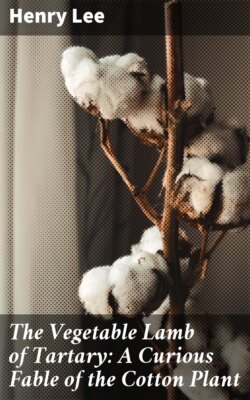The Vegetable Lamb of Tartary: A Curious Fable of the Cotton Plant

Реклама. ООО «ЛитРес», ИНН: 7719571260.
Оглавление
Henry Lee. The Vegetable Lamb of Tartary: A Curious Fable of the Cotton Plant
The Vegetable Lamb of Tartary: A Curious Fable of the Cotton Plant
Table of Contents
PREFACE
CHAPTER I. THE FABLE AND ITS INTERPRETATION
CHAPTER II. The History of Cotton and its Introduction into Europe
APPENDIX
A (p. 2). Sir John Mandeville
B (p. 8). Odoricus of Friuli
C (p. 11). Sigismund von Herberstein
D (p. 14). Julius Cæsar Scaliger
E (p. 21). Jans Janszoon Strauss, otherwise Jean de Struys
F (p. 28). John Bell of Autermony
G (p. 52). The Three Black Crows. By Dr. John Byrom
H (p. 71). The Destruction of the Alexandrine Library
INDEX
Отрывок из книги
Henry Lee
To Which Is Added a Sketch of the History of Cotton and the Cotton Trade
.....
Shortly after the publication of the above narrative by Sigismund von Herberstein, and probably in allusion to it, Girolamo Cardano, of Pavia, carefully discussed the phenomenon in question in his work ‘De Rerum Naturâ,’[7] printed at Nürnberg in 1557. He endeavoured to expose the absurdity of the statements made concerning this “animal-plant,” and explained the physical impossibility of its existence in the manner described. He argued that if it had blood it must have a heart, and that the soil in which a plant grows is not fitted to supply a heart with movement and vital heat. He also pointed out that embryo animals, especially, require warmth for their development from the ovum, which they could not obtain if raised from a seed planted in the earth, demonstrating clearly enough that no warm-blooded animal could exist thus organically fastened to the earth. In reply, however, to a possible question suggested by himself, why there should be no plant-animal on land, seeing that there are zoophytes in the sea, he, with the weakness and indecision which were innate in his character, admitted that “where the atmosphere was thick and dense there might, perhaps, be a plant having sensation, and also imperfect flesh, such as that of mollusks and fishes.”
[7] Lib. vi. cap. 22.
.....